 Mysteries
Mysteries  Mysteries
Mysteries  History
History 10 Surprising Stories About the Texas Rangers
 Humans
Humans 10 Philosophers Who Were Driven Mad by Their Own Theories
 Miscellaneous
Miscellaneous 10 Video-Game-Worthy Weapons and Armors from History
 Weird Stuff
Weird Stuff 10 Psychics Who Accurately Predicted Wartime Events
 The Arts
The Arts 10 Pieces of Art Inspired by a Broken Heart
 Health
Health 10 Science Fiction-Sounding New Medical Treatments
 History
History 10 Surprising Facts About the Father of Submarine Warfare
 Space
Space Ten Astonishing New Insights into Alien Worlds
 Weird Stuff
Weird Stuff 10 Bizarre Summer Solstice Rituals Still Practiced Today
 Mysteries
Mysteries Top 10 Haunting Facts About the Ghost Ship MV Alta
 History
History 10 Surprising Stories About the Texas Rangers
 Humans
Humans 10 Philosophers Who Were Driven Mad by Their Own Theories
Who's Behind Listverse?

Jamie Frater
Head Editor
Jamie founded Listverse due to an insatiable desire to share fascinating, obscure, and bizarre facts. He has been a guest speaker on numerous national radio and television stations and is a five time published author.
More About Us Miscellaneous
Miscellaneous 10 Video-Game-Worthy Weapons and Armors from History
 Weird Stuff
Weird Stuff 10 Psychics Who Accurately Predicted Wartime Events
 The Arts
The Arts 10 Pieces of Art Inspired by a Broken Heart
 Health
Health 10 Science Fiction-Sounding New Medical Treatments
 History
History 10 Surprising Facts About the Father of Submarine Warfare
 Space
Space Ten Astonishing New Insights into Alien Worlds
 Weird Stuff
Weird Stuff 10 Bizarre Summer Solstice Rituals Still Practiced Today
10 Epic Ways To Slay A Dragon
Flashing swords and flame-resistant shields are standard equipment for any would-be dragon slayer, but it takes more than mindless brute force to take down a legendary creature. It takes creativity. This list takes a look at some of the most epic and effective methods found in ancient mythology from all over the world.
10 Shiny Things
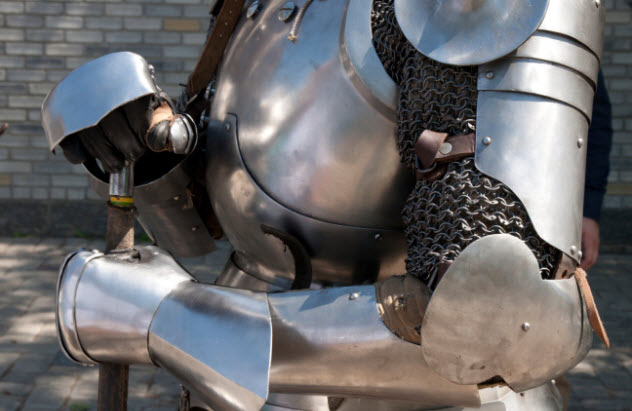
Possibly the briefest of dragon-slaying tales is that of Gerolde, a lesser-known figure of British folklore whose journey began with a happy accident but ended rather messily. When he set out to become a dragon slayer, Gerolde donned the shiniest armor he owned. Though likely selected for vain reasons, his choice of attire unexpectedly proved to be a deciding factor in his first conquest.
When he happened upon a small dragon, the brightness of the Sun reflecting off of Gerolde’s armor surprised and dazzled the beast. Taking advantage of its blindness, Gerolde quickly slew the dragon with his lance.
Everywhere he went afterward, the people greeted Gerolde with gifts of colorful silks and garlands. They begged him to wear these as tokens of their gratitude, so Gerolde used the fabric to fashion himself a colorful coat which he could slip over his armor. When he faced his second dragon, however, the coat eliminated the advantage which had secured his first triumph. The dragon reduced Gerolde to ashes before he landed his first blow.
9 Deadly Desserts
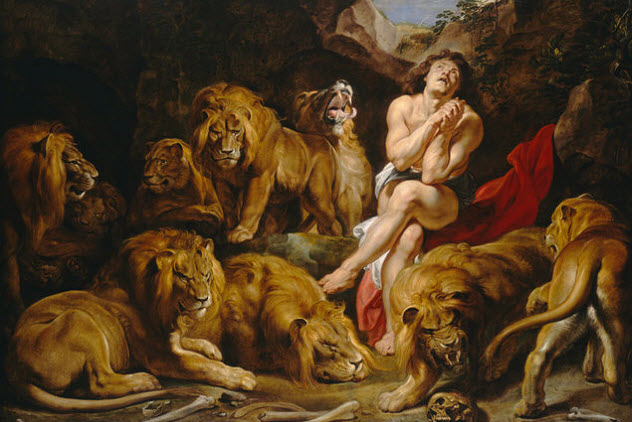
One story from the Bible’s Book of Daniel tells of the titular prophet’s rather eventful trip to Babylonia. One day, the king of Babylonia spoke to Daniel of a great dragon god whom he and his people revered. In response, Daniel asked for (and was granted) permission to prove that it was only a mortal creature and not divine at all.
Rather than fight the dragon, Daniel devised a clever plot to poison it. He combined pitch, fat, and hair, creating some of the nastiest “cakes” known to man. He offered them to the dragon, which ate them without hesitation. The plan worked, and the cakes killed the dragon. Unhappily for Daniel, the Babylonians were far from pleased that their god had been destroyed. They tossed Daniel into the lions’ den—literally. He survived, of course, but that is another tale for another time.
This particular story is one of three chapters of the Book of Daniel that is found only in the early Greek translations. While considered canonical by Catholic and Orthodox Christian standards, most Protestant versions reject these chapters as apocryphal.
8 Only A Dagger
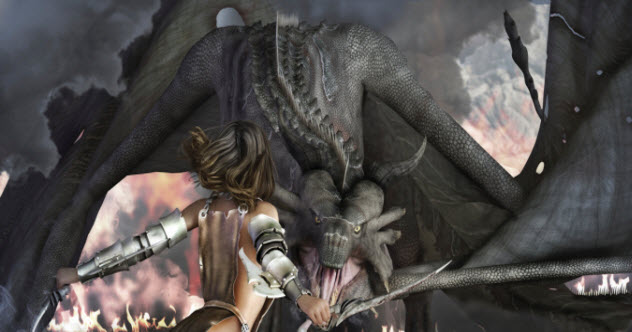
Not every dragon slayer was a big, tough man with something to prove. Tokoyo, a heroine of Japanese lore, faced her foe while armed with nothing but a dagger. While searching for her exiled samurai father, Tokoyo came upon an island under the tyranny of Yofune-Nushi, a divine sea dragon demanding annual tribute in the form of young girls. If the tribute was not delivered, the dragon called up wicked storms and drowned countless fishermen. Tokoyo took pity upon the villagers and volunteered herself as the next sacrifice.
She donned the ceremonial white robes and revealed the family heirloom, a small knife, which she carried with her. She held it between her teeth and dove down into the sea. In Yofune-Nushi’s cave, she found a statue of Hojo Takatoki, the man who had exiled her father. Turning to take the statue back to the surface, she came face-to-face with the dragon itself. Determined to fight to the end, Yofune-Nushi dodged to the side as she attacked and stabbed the dragon’s right eye. When it tried to retreat, Tokoyo went after its left side and stabbed it in the heart.
She returned to shore with both the statue and the lifeless body of Yofune-Nushi in tow. Word of her deeds and the statue made its way to Hojo Takatoki, who had been suffering from an unknown disease. Hearing the news, he realized that the sickness (which had vanished suddenly) was a curse connected to the statue and that the curse had been broken when the dragon was slain. Grateful to the young dragon slayer, Hojo Takatoki immediately pardoned Tokoyo’s father and released him from imprisonment. Reunited at last, father and daughter returned home, where they were hailed as heroes.
7 Bull Bait
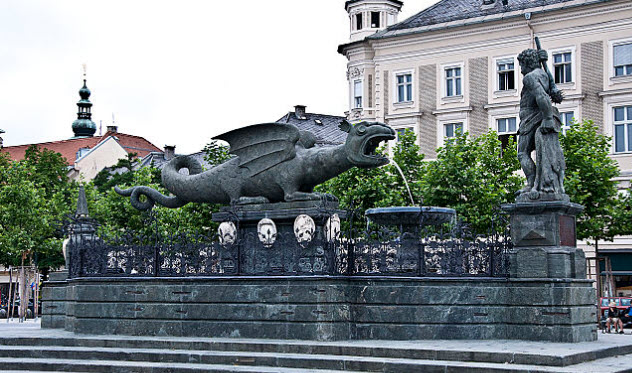
According to legend, a ravenous lindwurm (a serpentine dragon) once took up residence near modern-day Klagenfurt, Austria. Any human or livestock foolish enough to venture into its domain never returned.
One day, the king decided that enough was enough and sent forth a band of knights to slay the beast once and for all. Wary of the dragon’s breath, the knights endeavored to set a trap. Wrapping a barbed chain around a bull, they led the bull to the lindwurm’s lair and hid. Smelling dinner, the dragon emerged from its cave and attempted to devour the bull, realizing too late that it was caught like a fish on a hook. The knights dragged the creature forward and slew it before it could correct its mistake.
To honor their victory, a so-called dragon skull was placed on display in the town hall. The skull was eventually discovered to belong to a woolly rhinoceros, but in 1582, it served as the basis for a massive sculpture known as the Lindwurmbrunnen, or “Dragon Fountain.” It keeps watch over Klagenfurt to this day.
6 A Good Old-Fashioned Girdle
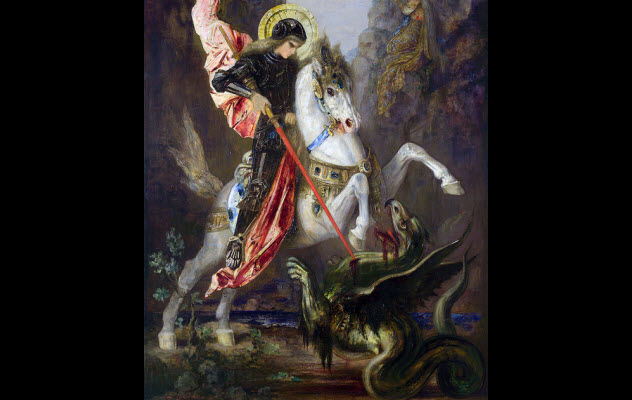
Many have heard The Golden Legend, the Christian story of how St. George slew a dragon. However, few remember the secret weapon that good old George used to tame and slay the big bad beastie.
As so many dragon tales do, it began with a princess about to be sacrificed. George, who just happened to be passing by, approached her. She begged him to leave, warning him of the impending danger. He refused, as any self-respecting knight would. When the dragon arrived, they fought a bloody battle. At length, George wounded the dragon with his spear and quickly turned to the princess. To her surprise, he asked her to hand over the secret weapon—her girdle.
By means unknown, George slipped the girdle around the dragon’s neck, immediately rendering the creature docile. Together, he and the princess led the dragon into the heart of the nearby city, where George calmly informed the locals that there was nothing to fear. He would slay the dragon if they promised to be baptized. Not surprisingly, both the king of the country and his people agreed. After everybody was properly converted to Christianity, George slew the dragon and had its body carted into the wilderness.
5 Exploit Its Weakness
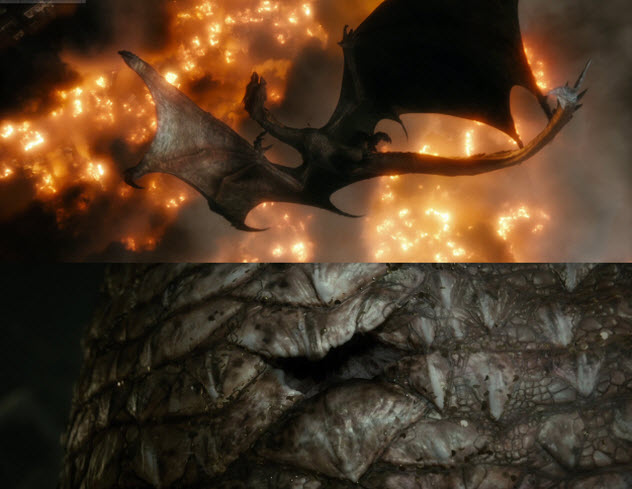
The Danish tale of King Frotho I and the dragon began with a song. While wandering the countryside, the king overheard a farmer singing to himself about a dragon lurking on a remote island, guarding a huge hoard of gold. When questioned, the farmer told the king of the island’s location. He also gave the king a bit of advice: Keep an eye out for the dragon’s weakness.
Frotho wasted no time sailing to the island to face the dragon himself. When his spear bounced off the creature’s hide without leaving so much as a scratch, Frotho realized that dragon slaying involves a bit more strategy than “stick it with the pointy end.” Luckily, when the dragon reared up, Frotho noticed a small chink in its armor, a missing scale. A weakness, just as the farmer had said. Retrieving his weapon, Frotho charged and drove the spear deep into the dragon’s breast, killing it. He sailed home with the treasure, relieved that his money troubles were over.
(If this story sounds more than a little familiar, it’s because the tale of the dragon Smaug in The Hobbit draws heavily on this myth, right down to the missing patch of scale.)
4 A Macabre Dance
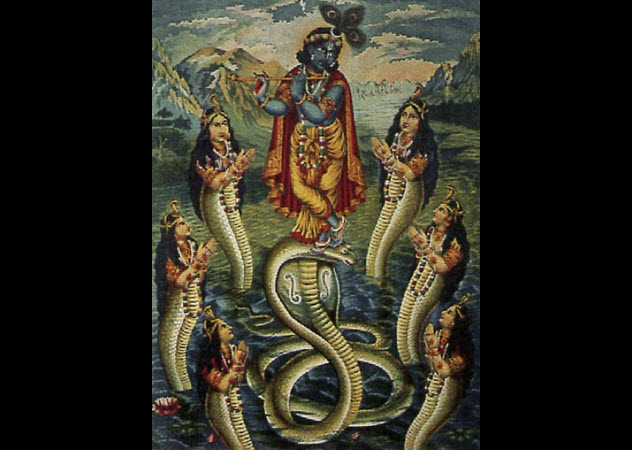
According to Hindu legend, the supreme deity Krishna once crossed paths with a river-dwelling, multiheaded dragon known as “Kaliya.” Seeing how the creature’s presence poisoned the water and the land, Krishna decided to destroy him. Without further ado, he leaped into the river and created a whirlpool to draw Kaliya’s attention.
Annoyed at the disturbance, Kaliya attacked but found Krishna to be a tougher opponent than expected. Flame and water did not harm the young god. Kaliya’s teeth, though huge and sharp, made no impression on Krishna’s flesh.
At length, Krishna led Kaliya to the surface. There he jumped onto one of the dragon’s heads and began to dance, playing the flute with one hand and batting Kaliya’s tail with the other. When Krishna had crushed that head beneath his feet, he jumped to the next and repeated the process, hopping from one to another like so many stepping stones.
Kaliya would have died were it not for the intervention of his wives, who appeared just in time to beg Krishna for mercy. He agreed to let Kaliya live, opting for banishment instead. But the fact remains—he could have killed a dragon with a dance.
3 A Stony Stare

Once upon a time in Greek mythology, Queen Cassiopeia dared to claim that her daughter Andromeda was more beautiful than even the Nereides. Insulted, the sea nymphs went to Poseidon, who sent the sea dragon Cetus to punish the foolish queen and her country. When Cassiopeia and her husband Cepheus sought the wisdom of the Oracle of Ammon, she advised them that the only way to be rid of Cetus was to offer up their lovely daughter as a sacrifice.
They chained Andromeda (naked, for some reason) to a seaside cliff. While they waited for Cetus, a wandering hero happened by at exactly the right moment. Perseus, mounted on the winged Pegasus, spotted Andromeda as he flew over the cliff. Struck by her beauty, he approached the king and queen. Once they informed him of the situation, he offered to slay the dragon and rescue the princess in exchange for her hand in marriage. They hastily agreed, and Perseus flew into battle with Cetus without further delay.
How Perseus defeated the sea dragon varies with different versions of the myth, but the most dramatic telling involves a certain infamous Gorgon—or at least, her recently severed head. Perseus flew before Cetus and drew Medusa’s head from its pouch. When the monsters’ eyes met, Cetus turned to stone and, presumably, sank to the bottom of the ocean to sleep with the fishes.
2 Sea Foam
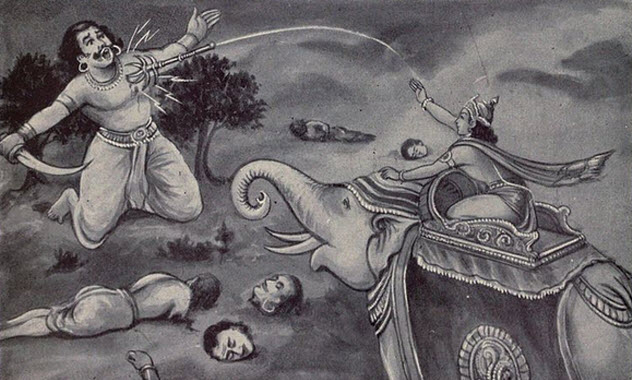
Appearing in ancient Vedic myth, Vritra was a powerful dragon demon said to be larger than mountains and as tall as the sky. Its thirst caused a worldwide drought. When Indra, future king of the gods, was born, he vowed to slay Vritra and return water to the world.
Like the story of Cetus, there exist multiple versions of how Indra killed Vritra. Initially, Indra struck down Vritra with a lightning bolt, but in later versions, Vritra became a bit harder to kill. In fact, in these accounts, Vritra managed to swallow Indra whole. Indra only lived to tell the tale because his fellow deities forced Vritra to vomit Indra back out. To his credit, Indra went straight into battle mode. But in the end, he was forced to retreat despite his determination.
Eventually, dragon and god grudgingly agreed to a truce: Vritra would not eat Indra again, and in return, Indra would not attack Vritra during either the day or night with any weapon made of wood, metal, or stone or with anything dry or wet.
While strolling down the beach one day, Indra noticed the sea foam and realized that he had found a loophole. In the twilight hours between day and night, he took the foam as his weapon. It wasn’t wood, metal, or stone, and it was neither dry nor wet. He attacked Vritra once more. As it turned out, the foam was actually the god Vishnu incarnate, who had come to help Indra defeat Vritra. A single strike with the divine sea foam was all it took to fell the dragon. With Vritra’s death, the drought finally ended.
1 Explosive Sheep

One 11th-century Polish myth centers around a man named Krakus. In addition to slaying a dragon, Krakus is credited with both the founding of Krakow and the construction of Wawel Castle.
Before either the city or the castle existed, a great green dragon lurked within a cave on Wawel Hill. Dubbed “Smok,” the dragon ate its fill of both cattle and children and incinerated any who dared to attack it. Krakus, a healer known for his wisdom and knowledge of herbs, devised a plan to end the dragon’s reign. Mixing a new potion of unknown ingredients, Krakus smeared the concoction onto a sheep. Unbeknown to the dragon (and probably the sheep as well), Krakus had rendered the sheep into a ticking, bleating time bomb of sorts.
The unfortunate sheep was tossed into the dragon’s lair to be devoured. A short time later, the dragon emerged from its cave and, consumed with thirst, headed for a nearby river. It drank and drank. Maddened by the burning in its gut, it drank some more. Eventually swollen to grotesque proportions by the enormous volume of water it had consumed, the dragon exploded.
Krakus returned to town a hero and was begged by the people to rule them as their prince. Thus was a city founded and a castle built, and everyone lived happily ever after—except, of course, for the dragon. (And the sheep.)
Kim is a writer with mild experience in video game journalism and a particular love of cats, chocolate, and fairy tales. Feel free to check out her work/play blog and LinkedIn, or follow her via @dreamwarrior13 on Twitter.








